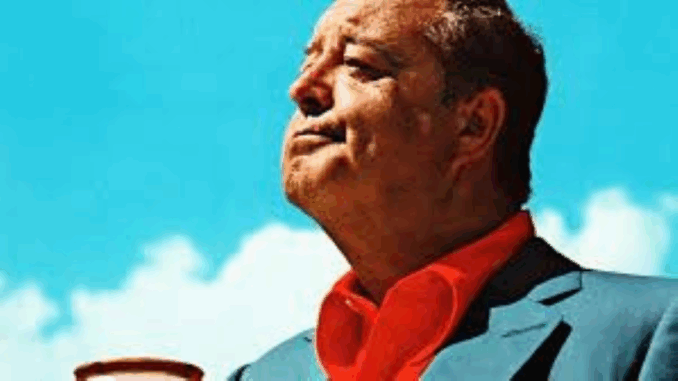
By the mid-1960s, American television had entered a new era. Color was transforming the small screen, and variety programming was exploding in popularity. For Jackie Gleason — one of TV’s biggest stars — this shift was both a challenge and an opportunity. Nearly a decade after The Honeymooners ended its original black-and-white run, Gleason decided to bring back Ralph, Alice, and Norton — but this time, in dazzling color. The result was The Color Honeymooners, also known as The Jackie Gleason Show Honeymooners Specials.
These revivals were not simply reruns of the old formula; they represented a dramatic reinvention of the world Gleason had created in the 1950s. With new stories, new settings, and even new faces, The Color Honeymooners offered both a nostalgic return and a bold leap forward — one that reflected the broader transformation of television itself.
From Brooklyn to Miami: A New Stage for Old Friends
In the original Honeymooners, everything revolved around a single shabby apartment in Brooklyn — a humble set that symbolized the working-class struggles of postwar America. In contrast, the 1960s color revival was filmed in the lavish studios of Miami Beach, Florida, where Gleason had relocated to produce The Jackie Gleason Show.
Gone was the cramped, monochrome tenement. In its place stood colorful, expansive sets filled with the kind of polish only network variety shows could afford. Gleason, ever the showman, surrounded himself with a full orchestra, live dancers, and a theatrical flair that mirrored his own larger-than-life personality.
This shift in tone was deliberate. By the 1960s, Gleason was less interested in gritty realism and more drawn to spectacle. The color format allowed him to embrace a grander, more cinematic vision of The Honeymooners — one filled with vibrant costumes, sweeping musical numbers, and far more elaborate storytelling.
A New Alice and a Glamorous Trixie
Much of the heart of The Honeymooners always lay in its cast. When the show returned, fans were delighted to see both Audrey Meadows and Art Carney reprise their roles as Alice Kramden and Ed Norton. Their chemistry with Gleason was still magnetic, proving that time had done little to dull their comedic rhythm.

However, not all the faces were the same. Joyce Randolph, the original Trixie Norton, did not return for the revival. Her role was recast with Sheila MacRae — a talented actress and singer who brought an entirely new energy to the part. Unlike Randolph’s modest, soft-spoken Trixie, MacRae’s version was more glamorous and theatrical, fitting the show’s new, more polished tone.
This change was symbolic of the revival as a whole: where the 1950s version had celebrated working-class modesty, the 1960s adaptation embraced sophistication and entertainment flair. It was The Honeymooners reimagined for a generation accustomed to the bright lights of color television.
Bigger Stories, Wilder Adventures
With a bigger budget and a variety-show framework, The Color Honeymooners expanded far beyond the Brooklyn apartment. Ralph and Norton were no longer confined to domestic squabbles and failed get-rich schemes — they now embarked on international adventures, entered wacky contests, and sometimes found themselves in musical dream sequences.
Episodes sent the duo traveling across Europe, mingling with foreign royalty, or getting caught up in absurd situations that played more like Broadway comedies than slice-of-life sitcoms. Gleason, who had always loved music and dance, often included elaborate production numbers, complete with orchestras and chorus lines.
This new storytelling style reflected Gleason’s evolving tastes as an entertainer. By the 1960s, he was as much a showman as a comedian, and The Color Honeymooners became a canvas for his creative ambition — part sitcom, part musical, part variety extravaganza.
Critical Reactions: Divided But Fascinated
When The Color Honeymooners aired, critics and audiences were split. Some praised its energy, polish, and inventiveness. The revival demonstrated that Gleason still had an unmatched command of timing, charisma, and comedic control. It also introduced the Kramdens and Nortons to a new generation who had never seen the original live broadcasts.
However, longtime fans of the 1950s version were more skeptical. For them, something essential had been lost — that raw, working-class authenticity that made the original Honeymooners so relatable. The gleaming color sets and musical interludes, while impressive, seemed to overshadow the human intimacy that once defined the show.
Yet even those who missed the old days couldn’t deny the significance of what Gleason achieved. The Color Honeymooners was more than nostalgia; it was a reflection of how television itself had changed — from a scrappy, experimental medium to a highly produced entertainment machine.
A Window Into Television’s Evolution
Looking back today, The Color Honeymooners stands as a fascinating snapshot of an industry in transition. In the 1950s, live broadcasts were intimate and unpolished, relying heavily on actor chemistry and dialogue. By the mid-1960s, color technology, studio production, and audience expectations had completely transformed the medium.
Gleason’s decision to revive The Honeymooners in this new format wasn’t just about cashing in on past success — it was about proving that his characters could survive in a new television era. And in many ways, they did. The revival specials were well-rated, frequently syndicated, and helped preserve The Honeymooners legacy for decades to come.
Legacy: Two Worlds, One Dream
In retrospect, The Color Honeymooners didn’t replace the original — it complemented it. Where the 1950s Honeymooners captured the struggles of everyday people in a gray world of modest means, the 1960s version reflected a brighter, more optimistic America — one dreaming in color.
Through both versions, Jackie Gleason showed his range not only as an actor but as a visionary entertainer. Whether shouting in a dingy Brooklyn kitchen or dancing on a Miami stage, Gleason’s Ralph Kramden remained one of television’s most enduring creations — flawed, funny, and utterly human.
